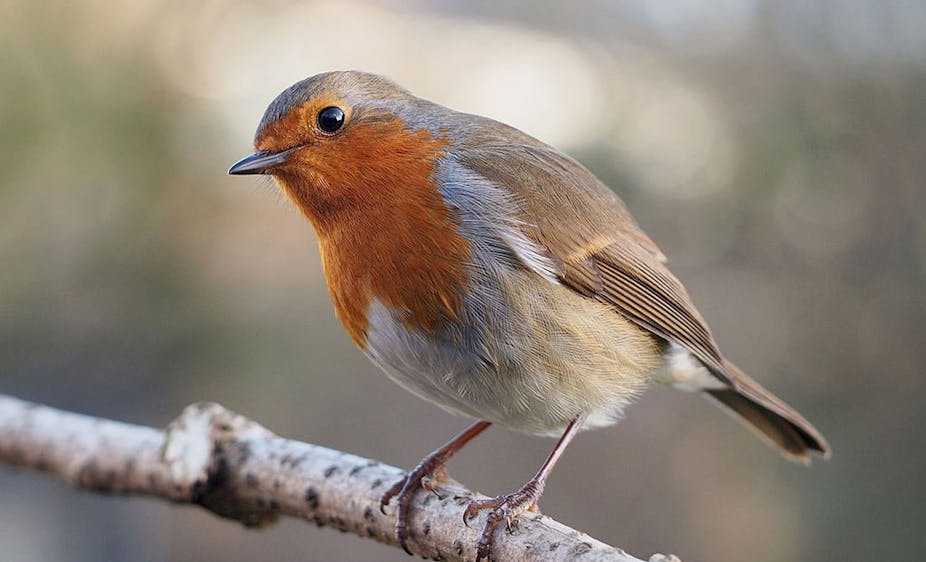World temperatures have reached unprecedented levels in the last years and the consequences of climate change are clearly perceptible. Glaciers are melting, the frequency and magnitude of extreme weather events is increasing… In silence, biodiversity is paying the price, and a significant proportion of species is already declining.
Sometimes life finds a way to adapt, however: some species are able to shift their distribution range poleward, some may shift their activity period, while others would shrink theirs. Is this the result of an adaptive strategy to avoid overheating? During my PhD, I showed that this phenomenon was mostly true in regions that are already constrained by heat such as the Mediterranean region in France, but not in the rest of the country.
Bergmann’s rule
Biogeography, a science aimed at describing and explaining the geographic distribution of living beings, is a poorly known domain. Yet, it is a long-standing issue whose founding fathers such as Charles Darwin and Carl Bergmann were under the spotlight during the 19th century. The former is the author of the famous theory of evolution, while the latter has stated the biogeographic principle carrying his name: Bergmann’s rule.

Under high latitudes, corresponding to cold regions, animals tend to be larger than those living under lower latitudes. This trend mostly apply to endotherms: birds and mammals. Specifically, body size differences can be observed within groups of species (order or family) such as bears. Take a polar bear for instance, which is much larger than other bear species.
While there are many exceptions, recent biogeographic studies have shown that Bergmann’s rule mostly apply at the within-species scale. Individuals of a given species such as the European robin, living toward the hot edge of their distribution range tend to be smaller than those living at the cold edge. This phenomenon is related to the efficiency of thermoregulation, the capacity to maintain or lose body heat. Larger individuals, being able to better conserve body heat, were selected in cold regions as a result of a lower risk of hypothermia. Conversely, smaller individuals were selected in warmer latitudes since they are less likely to suffer from overheat.
Biogeography is fascinating, but does it even matter in our society? The Earth’s climate is getting warmer and its impact can be already be perceived through biodiversity. Wildlife is not only important to human kind for its entertaining aspect. Not only for beauty, legacy, or passion. In short, not only for its intrinsic value. It is also valuable for the service given to civilisation. Agricultural productivity and food safety, for instance through pollination. Discovery of new substances with medical or industrial application, welfare and health, ecotourism, technological development… The potential impacts are both diverse and immense – it’s not something just for ecologists.
Species’ responses to climate change
When species seek to survive to a changing world, they can respond to climate change through three dimensions: space, time and physiology. Any strategy can help to cope with changing conditions – for example, running away from the heat.
Through space: we can observe poleward shifts in species’ geographic distributions.
Through time: species shift their activity periods. Cherry trees bloom earlier in the spring. Marmots emerge sooner from their hibernation.
Through physiology and phenotype: species modify their metabolism, which can be expressed by changes in morphology and body size.
Shrinking body size would allow animals to improve their heat loss efficiency. This is the application of Bergmann’s rule through time, to the context of temporal change in climatic conditions. The topic is presented in a humorous three-minute musical clip:
The proposal of an application of Bergmann’s rule through time is recent, and body size response to climate change is still poorly understood. Do animals become smaller in every places? Is it actually an adaptive response for a better thermoregulation?
Our research team based at the Museum of Natural History in Paris attempted to provide an answer using citizen science data from the French bird ringing programme, based on more than 30 years of bird measurements all across the country. The results were published in Global Ecology and Biogeography, and showed that young birds were smaller in hotter springs, but only at the warmest sites around the Mediterranean region where the heat is already a constraining factor. Conversely in the remaining sites, more constrained by cold during spring, juveniles were larger in warmer years. In this context, higher temperatures would enable fledgling birds to save the energy that is usually spent to maintain their heat, and allocate it to cellular division and body growth instead.
Direct and indirect effects
These contrasting effects of warming may be related to direct effects on thermoregulation, but also to indirect effects on ecosystem productivity and food availability. A local increase in temperature at the warmest places would increase aridity, which would harm plant growth and hence insect abundance, which constitute juvenile birds’ favourite food. The opposite pattern would be observed at the coldest site: warmer conditions would stimulate plant production and insect activity, providing more food available for bird consumption.
Climate warming may induce animal body size decline, but at places that are already constrained by heat. There is no evidence that this response is an adaptation. The latest studies, published in Nature Communications and in Proceeding of the Royal Society of London, suggest that shrinking body size may be the result of a non-adaptive response to environmental degradation instead. Another warning in the face of an ongoing climate crisis.



